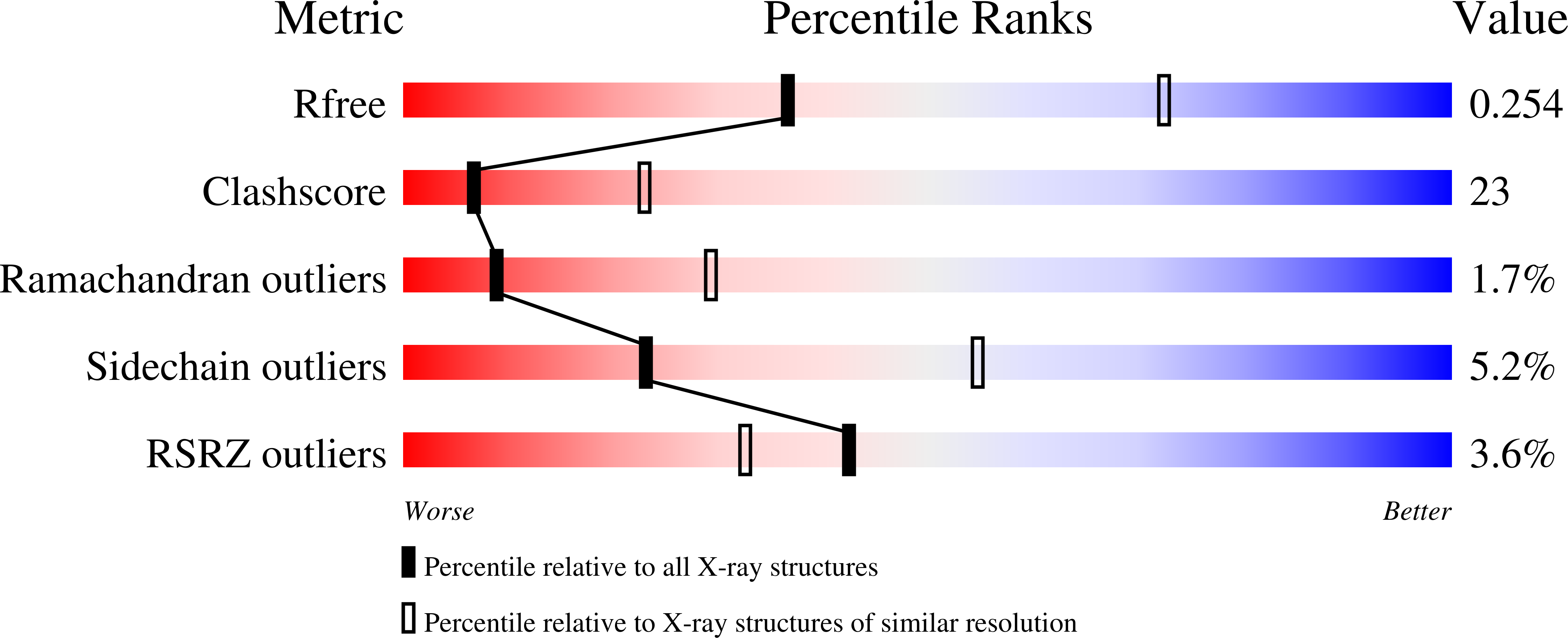The occupancy of ions in the K+ selectivity filter: Charge balance and coupling of ion binding to a protein conformational change underlie high conduction rates
Zhou, Y., MacKinnon, R.(2003) J Mol Biol 333: 965-975
- PubMed: 14583193
- DOI: https://doi.org/10.1016/j.jmb.2003.09.022
- Primary Citation of Related Structures:
1R3I, 1R3J, 1R3K, 1R3L - PubMed Abstract:
Potassium ions diffuse across the cell membrane in a single file through the narrow selectivity filter of potassium channels. The crystal structure of the KcsA K+ channel revealed the chemical structure of the selectivity filter, which contains four binding sites for K+. In this study, we used Tl+ in place of K+ to address the question of how many ions bind within the filter at a given time, i.e. what is the absolute ion occupancy? By refining the Tl+ structure against data to 1.9A resolution with an anomalous signal, we determined the absolute occupancy of Tl+. Then, by comparing the electron density of Tl+ with that of K+, Rb+ and Cs+, we estimated the absolute occupancy of these three ions. We further analyzed how the ion occupancy affects the conformation of the selectivity filter by analyzing the structure of KcsA at different concentrations of Tl+. Our results indicate that the average occupancy for each site in the selectivity filter is about 0.63 for Tl+ and 0.53 for K+. For K+, Rb+ and Cs+, the total number of ions contained within four sites in the selectivity filter is about two. At low concentrations of permeant ion, the number of ions drops to one in association with a conformational change in the selectivity filter. We conclude that electrostatic balance and coupling of ion binding to a protein conformational change underlie high conduction rates in the setting of high selectivity.
Organizational Affiliation:
Molecular Neurobiology and Biophysics, Howard Hughes Medical Institute and Rockefeller University, 1230 York Avenue, New York, NY 10021, USA.


















